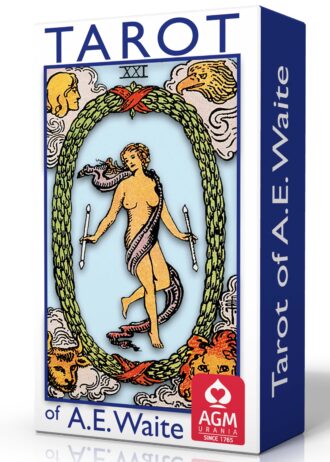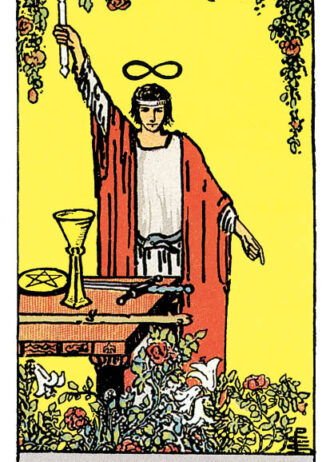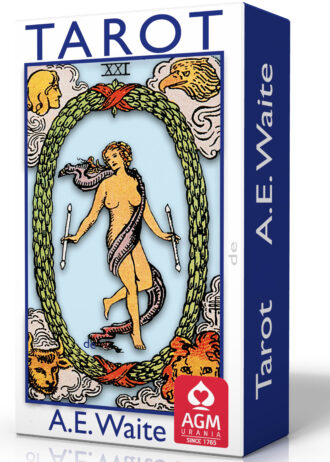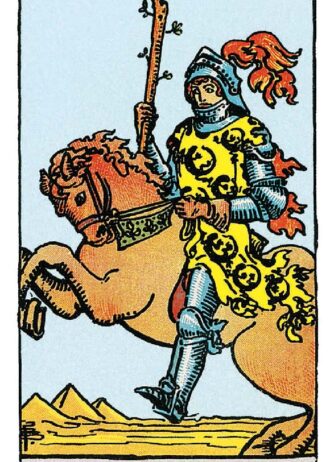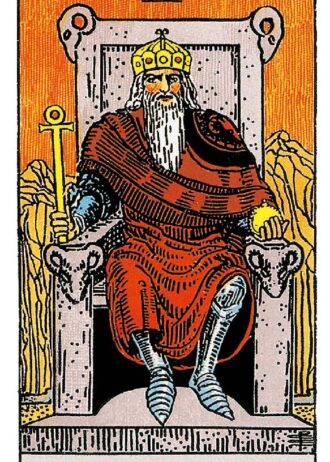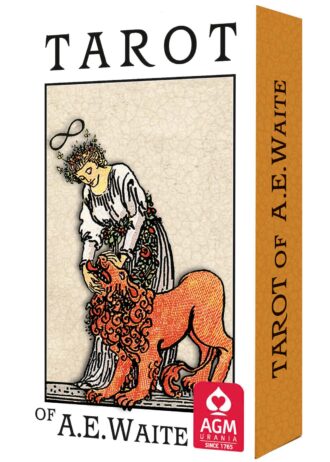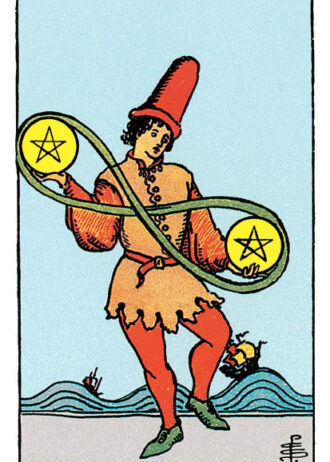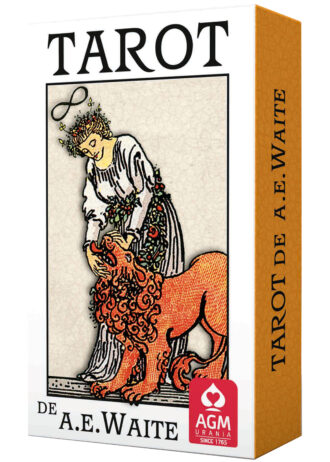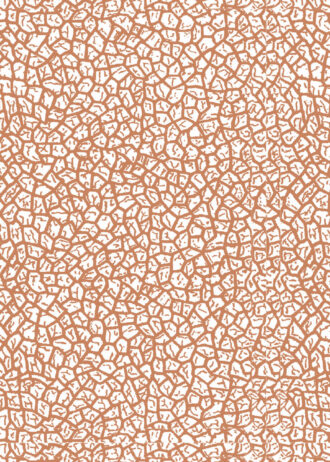Colman Smith, Pamela
""
Writer, illustrator and the creator of the famous Tarot by A. E. Waite.
16.02.1878 - 18.09.1951
Pamela Colman Smith was born in London on February 16, 1878. Pamela came into contact with the theater and the art scene at an early age. Her parents were enthusiastic supporters of the theater and the visual arts. Manchester was a center of spiritualism at the time and it is likely that little Pamela came into contact with it at an early age, as her mother was quite close to this scene. In 1889 the family moved to Jamaica, where her father was engaged in railroad construction.
In 1893, Pamela moved with her father to New York, where she attended the Pratt Insitute in Brooklyn, one of the leading private art schools in the United States. There she was a student of Arthur Wesley Dow, an American painter and art educator who held some unusual views for the time. He taught of the spiritual side of art, of hearing the colors, seeing the sound, and smelling the music. His influence was to be felt in Pamela's paintings throughout her life.
1899 seemed to be Pamela's most successful year. She published three books of her own and illustrated several important books by other authors.
In this illustrious company, Pamela's career actually seemed destined. She had made something of a name for herself as a writer and artist, moving around the art scene and literary circles of London and having several exhibitions in the United States. It was in England that she met the poet William Butler Yeats. In 1903 she illustrated some of his works. It was Yeats who then introduced her to the Hermetic Order of the Golden Dawn.
Pamela belonged to the group of people who are called synesthetes. Synesthesia is the coupling of perceptions that are physically separate. This includes, for example, the so-called color hearing, i.e. a sound is heard and a certain color is seen at the same time. In the case of a complete melody, whole pictures can appear in front of the inner eye or a kind of color firework is created, which, however, is not always perceived as pleasant by the affected person. However, this sensation is not reversible. Today synesthesia is the subject of research and is considered a physiological norm variant. Pamela therefore had an ability that set her apart from others. Added to this was her artistic talent. So it was actually no wonder that Arthur Edward Waite turned to Pamela years later for the realization of his Tarot.
Between 1908 and 1909 she began to create her most famous work, the pictures for the cards of the later named Tarot by A. E. Waite. In any case, in November 1909 she writes a letter to Stieglitz in which she informs that she has finished work on 80 images for a Tarot deck, but has received very little money for it.
The Tarot Deck is published in December 1909 by the publisher Rider & Sohn as "Tarot Deck" without a specific name. At that time, it was simply not customary to give the name of the artist or to give him a share of the revenue in the form of royalties. The artist did his work, got a fee for it and that was it. Only later was this tarot called the Tarot of A. E. Waite, after the name of the author. Today this seems very unfair to us, especially since it is known that Pamela, according to her own statement, received little money for her work and was completely impoverished in her old age, although she had created the most famous Tarot in the world. In 1909, however, this was not yet foreseeable.
There is disagreement today as to whether Pamela Colman Smith painted the cards exclusively according to Waite's instructions, or whether Waite only outlined the type of depictions but otherwise gave her largely free rein.
In the following years, Pamela kept her head above water with various commissions, mainly book illustrations. Although her work was repeatedly praised by experts, the great success unfortunately failed to materialize. However, the fact that she had no business sense at all, as was repeatedly reported by her acquaintances, probably also contributed to this.
She died poor, but not lonely; she is said to have never lost her sense of humor and her endearing nature. Throughout her life she drew her inspiration from fairy tales, legends, myths and especially from music.
She died impoverished and in debt in Bude, Cornwall, on September 18, 1951. She left her few possessions to Nora Lake, a longtime friend.
Source Notes:
Image: Pamela Colman-Smith, ca. 1912, Stuart R. Kaplan, The Encyclopedia of Tarot, Vol. III, courtesy.
Stuart R. Kaplan, The Encyclopedia of Tarot, Vol. III
Holly Voley, biography, based on Melinda Boyd Parsons, biography of Pamela Colman Smith.

